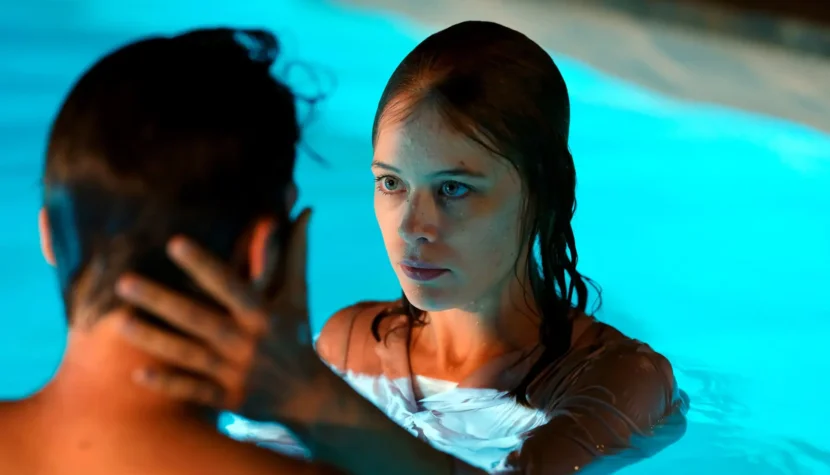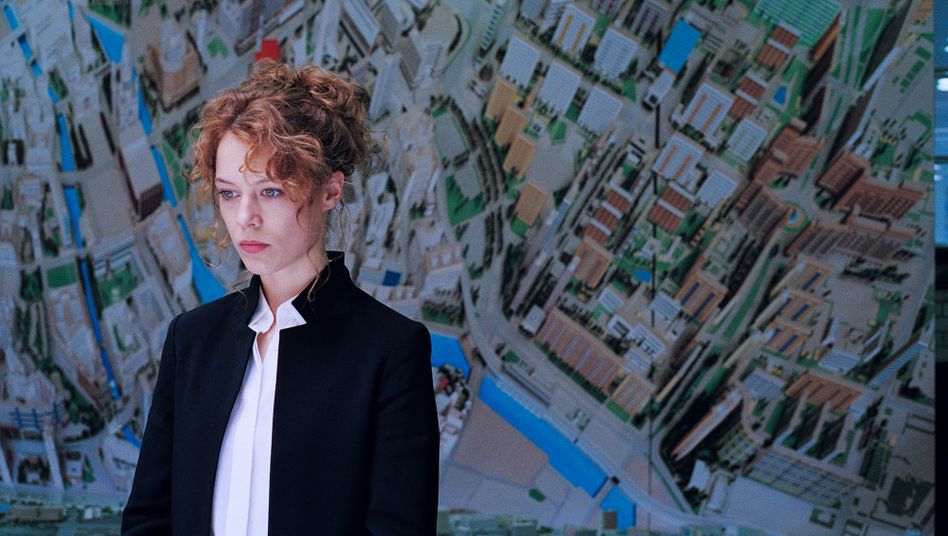UNDINE. Romantic Realism

Undine is a character from Norse mythology associated with water, typically inhabiting rivers, lakes, and marshes. They are known for their extraordinary beauty, seducing men and forming lifelong bonds with them. The motif of undines (or related nymphs and rusalkas) frequently appeared in Romantic-era stories, drawing heavily from folklore. Seemingly, undines have faded into obscurity with the advent of the scientific and rational era—there seems to be no place in the world for mythical beings today. Or is that merely an illusion?
In his film, Christian Petzold, known for works like “Barbara” and “Phoenix”, revives this mythical theme of water spirits, incorporating it into the realistic romance genre.
The title character of the film is Undine Wibeau (a surname that might reference the protagonist of Ulrich Plenzdorf’s “The New Sorrows of Young W.”, which processes Goethe’s romantic literature through its protagonist’s life struggles). She is a young, attractive historian working at a Berlin museum, where she regularly presents the urban history of Berlin to tourists and foreign visitors. At first glance, her unusual name is the only indication of her mythical connections, but it becomes clear that this is not the end of the story—her alluring charm has something half-supernatural about it, and she seems emotionally dependent on her relationship with a man. In the film’s opening scene, her boyfriend Johann breaks up with her, leaving Undine emotionally shattered. But not for long, as that same day, Christoph, who is enchanted by her lecture, appears in her life, and Undine begins a romance with him under extraordinary circumstances.

In essence, the seemingly mundane story of Undine and Christoph—a chance encounter, the blossoming of their feelings, and the disruption by echoes of the past—takes on a refined form in Petzold’s hands, balancing between melodrama and magical realism. Undine enchants with a somewhat otherworldly atmosphere and intrigues with subtle hints left in passing. Simple scenes are saturated with emotion, and the protagonist is both human and ethereal. Following the lovers’ story—historian and professional diver—Petzold draws intricate parallels between their characters, aquatic symbolism, and the city built on a swamp, Berlin. The metropolis extensively described by Undine, particularly its oldest part located along the Spree, is linked with the protagonist. In fact, the city almost becomes a third character, serving not only as a vehicle suggesting the protagonist’s water-related identity and introducing grand metaphors of the (im)possibility of changing a continually recreated reality but also creating a vivid space for the central narrative through its convoluted history.
Petzold navigates the narrative with a steady hand, building an intimate portrayal of the heroine, the city, and the feelings between the two characters without formal excesses. He constantly introduces uncertainty about the ontological status of the entire story. Undine could simply be a charming girl, with the incredible circumstances of her romance being mere coincidences, an impression created by the euphoria of new lovers. Alternatively, the girl with the extraordinary name could indeed be a surviving undine-nymph, an unchanging being irrevocably linked to Berlin’s marshes. The fascinating ambiguity of this question, the lingering question mark over the story’s meaning, and the melancholic mood evoking echoes of folk tales and Romantic literature are what make “Undine” most captivating.

Christian Petzold’s cinema, despite its inventiveness, is always surprisingly subtle and simple.
In this touching story, Paula Beer delivers a phenomenal performance, possibly her most mature to date. The young actress blends sensual ethereality, natural gestures, and a sparkling passion in her eyes, allowing us to believe she is indeed an undine living in a 21st-century metropolis. At the same time, Beer evocatively conveys her character’s deeply human emotions, from romantic euphoria to nostalgic anxiety, and ultimately to sorrow and confusion. Through subtle changes in expression, the actress also discreetly suggests the internal drama of struggling with one’s own character, which gradually emerges as an existential trap for the sensitive woman—her dependence on her lover’s feelings resonates with tragic notes, and her attempts to overcome it impart a depth that makes the entire film moving.
I must admit, I have a weakness for Christian Petzold’s cinema, which, despite its inventiveness, is always surprisingly subtle and straightforward. Few other directors can build films around such audaciously elaborate concepts in such a convincing and nearly unpretentious way. In “Undine”, Petzold’s surrealism combined with the economy of cinematic language once again makes the fantastically twisted story surprisingly graceful, seducing with its understated form and ambiguous meanings. “Undine” is another top-tier film in the director’s career, showcasing the fruitful collaboration with Beer and Rogowski. The German trio creates a contemporary fairy tale that restores faith in the possibility of fantastic beings and, in a modern way, questions their identity.

